
How Asia fell in love with real Neapolitan pizza, and the disciples who learn from Naples about true pizza making
- Naples is the spiritual home of the original pizza, and the Neapolitan recipe is strenuously protected
- Neapolitan pizza makers have travelled the world spreading the word about authentic pizza making, opening schools and training others
Pizza is more than just a famous Italian flatbread. Making the savoury dish is an art form and there’s only one original pizza: the “veracious”, or true, Neapolitan, made according to strict regulations.
Forget Pizza Hut and other commercial chains. Authentic pizza was born in the city of Naples, has a distinctive flavour and crust, and is generally topped with tomatoes and mozzarella.
The traditional recipe is protected by a consortium – the Associazione Verace Pizza Napoletana, or Association of Naples’ Veracious Pizza. Committed to preserving and spreading the word about the Naples staple, the consortium has embarked on a mission to introduce the original Neapolitan to the world.
Pizza masters and chefs are travelling far and wide, opening schools to train local pizza makers, and inviting them on courses and internships in Naples’ busy pizzerias.

After the United States, where immigrant Italians have been making pizza for generations, Asia is the main target, especially Japan, where the consortium has dozens of affiliate pizzerias. It has opened pizza schools in Osaka and Kyoto in the past couple of years, while Naples-style pizzerias have recently appeared in Taiwan, South Korea and the Philippines. A new school has also been launched in Thailand, and courses are being organised in Myanmar and Indonesia.
Masayoshi Ishida heads the College of Gastronomy Management at Japan’s Ritsumeikan University, where he teaches Italian food culture and traditions, and has introduced pizza making lessons.
“The Americans first brought pizza to Japan after the second world war, but it’s not the real thing,” the professor says. “It’s always been a commercial food with pepperoni, ketchup, industrial cheese. It’s actually quite disgusting, but it was considered cool to eat.”
The perspective began to change after the Japan’s economic boom allowed Japanese to travel to Italy and discover real pizza. Word spread that in Naples pizza masters have for centuries been making the original, artisan version that blends culture and culinary traditions.
Japanese people have always loved Italian food and everything related to the country, and the real Neapolitan pizza is the sublime expression of Italy, Ishida says.
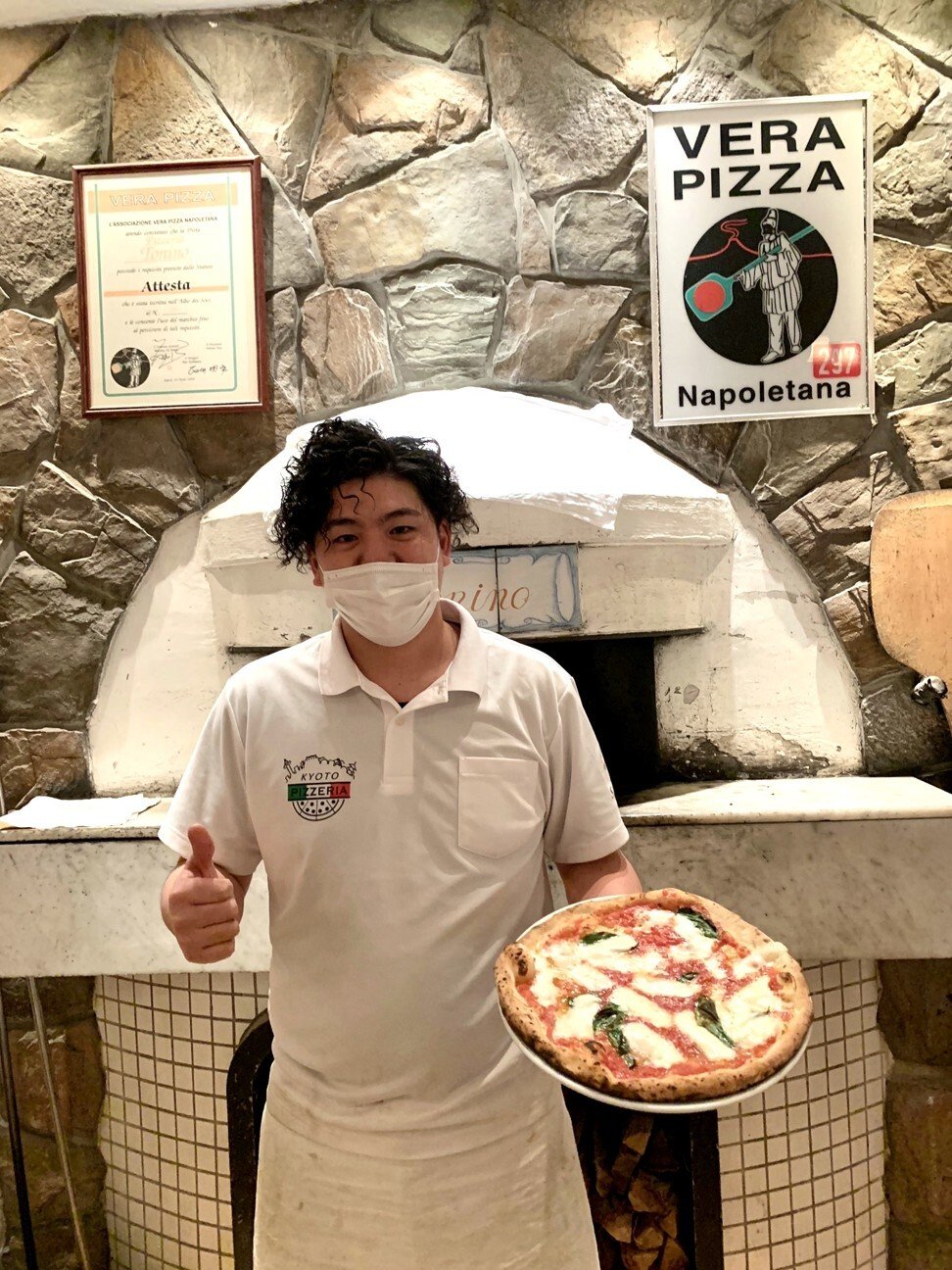
Pizza in Japan isn’t savoured as a main course, however, as it is in Italy, but as a snack, possibly with chips, with slices split among friends and often eaten standing up. For Italians, by contrast, it is a proper lunch or dinner dish, and the Neapolitan pizza consortium hopes to win the Japanese over to this way of thinking.
“Italy is always a winning card in Japan,” Ishida says. “For Japanese people it stands as a genial idea, the supreme expression of creativity and authenticity. This is what lures young chefs to train in the art of pizza making, which also raises their prestige, level and income.”
Takaya Anzai, a “veracious pizza man” of the Naples consortium, works at Tokyo’s Pizzeria Il Lupone. He says he was won over by the art of pizzas when he visited the Italian city in 2002.
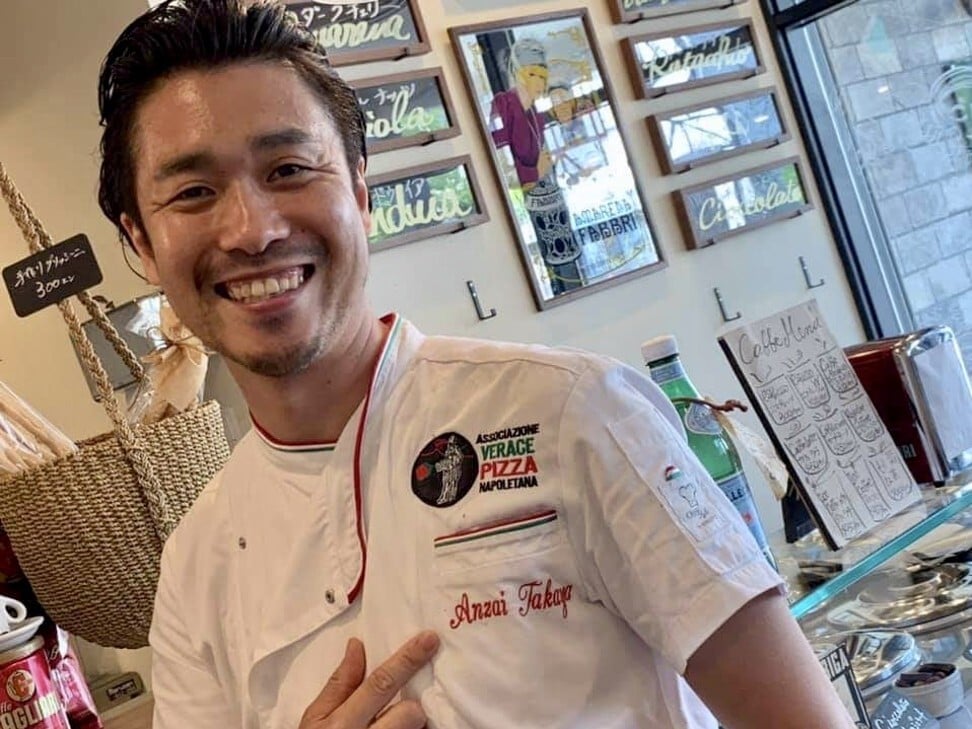
“I was flabbergasted by the ability and technique of local pizza men, the way they moved their hands,” he says.
Anzai wanted to learn their techniques, so he arranged an internship in Naples, where he spent days and nights acquiring the know-how to prepare the dough and follow the correct cooking steps.
Given pizza has yet to be regarded as everyday food in Japan, Anzai prefers to stick to the traditional Margherita – tomato, mozzarella and basil – rather than offering customers more creative twists that could distort the basic recipe.
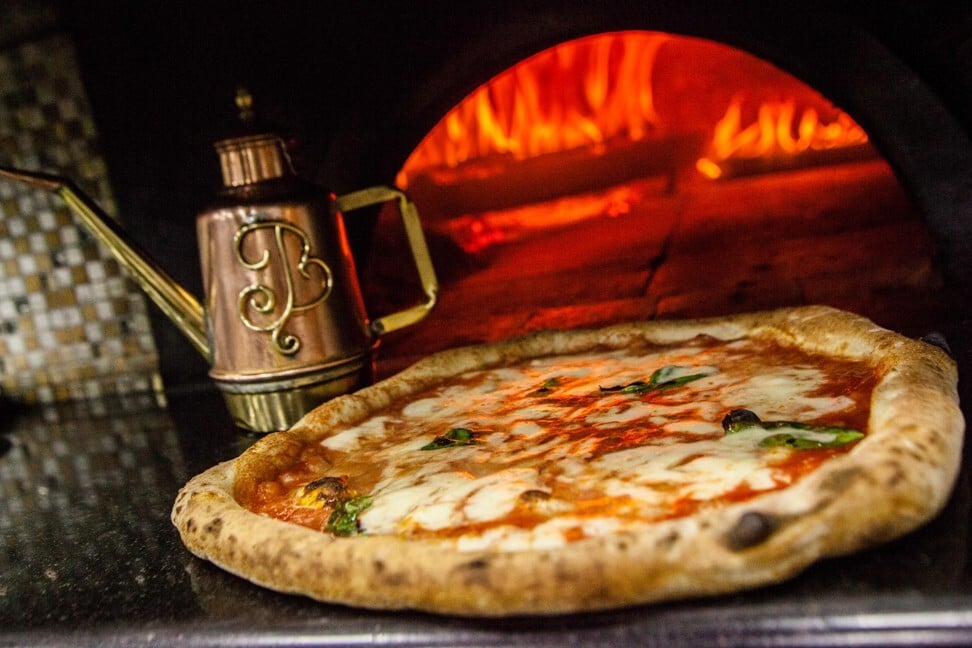
Making the real Neapolitan pizza is no joke and the regulations are very strict, says Guglielmo Vuolo, the consortium’s master chef.
Tomatoes should be of Neapolitan origin, preferably the sweetish, little San Marzano variety hailing from the Campania region. The olive oil should be extra virgin, and the dough 4mm thick with a 1cm to 2cm tall rim, otherwise it cracks. The thickish, tender, soft crust is how Neapolitan pizza differs from all imitations. Today, Japanese chefs can use fresh products imported from Italy.
Vuolo praises the Japanese students’ ability to learn quickly. “They understand that making pizza is like a ritual, a magical act based on fluid gestures,” he says. “Each time I make a pizza, my hands move with an energy of their own, and each pizza is a unique creation.
“The Japanese have grasped the art of gestures and how every single movement of the hands bears a deep significance, for it is common also to their culture.”

The gestures involved in the elegant steps in Japanese tea preparation and serving, for example, find a parallel in Naples’ authentic creation, particularly in the elaborate act of dough kneading, he says.
Vuolo’s lobby spreads awareness about how authentic pizza embodies Napolitanità – the Neapolitan way of being, which is loved by Japanese people.
“Pizza is more than just food,” he says. “It is the expression of the Neapolitan lifestyle; it’s part of our soul, and the Japanese appreciate this intangible, precious quality.”
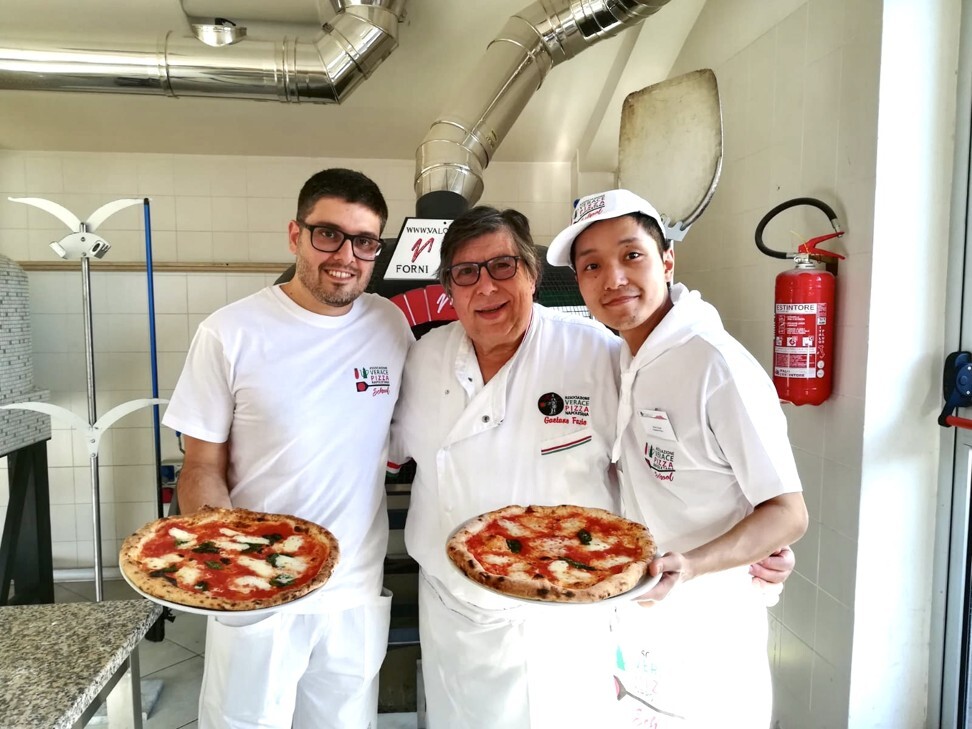
At his award-winning pizzeria 4A, in Naples, Vuolo trained Masashi Taniguchi, master pizza chef at Tokyo’s Tonino pizzeria, who ditched his former job as printer to embrace the art of pizza making.
“I was 20 when I tasted a slice of real Neapolitan pizza. It was like being struck by lightning,” Taniguchi says. “I realised it was to be my life’s mission. Making pizza is a passion, it’s a lifestyle. I consider Vuolo as my master. I respect and will be grateful to him all my life for all that he has taught me.”
Language can remain a barrier for students and their teachers, and interpreters must step in constantly during courses in Naples, because neither speak each other’s native tongue.
You need discipline, research, study, professionalism. The dough and cooking time are tricky, but my Japanese students always apply themselves with determination
Celebrated pizza chef Gaetano Fazio, owner of Da Gaetano pizzeria on the island of Ischia in the Gulf of Naples, has trained dozens of Japanese, Thai and Filipino students. He regularly travels to Japan and hosts groups of trainees at his establishment for in-depth courses. In Japan, he’s considered a pizza superstar.
“I have been visiting for the past 22 years, checking that local pizzerias respect the regulations and are actually making the real Neapolitan pizza,” Fazio says. “At least three of my former trainees who have opened pizzerias in Japan have named them Da Gaetano in my honour, which fills me with pride.”
Fazio notes that despite the apparent simplicity of pizza, learning the right techniques cannot happen overnight. “You need discipline, research, study, professionalism,” he says. “The dough and cooking time are tricky, but my Japanese students always apply themselves with determination.”
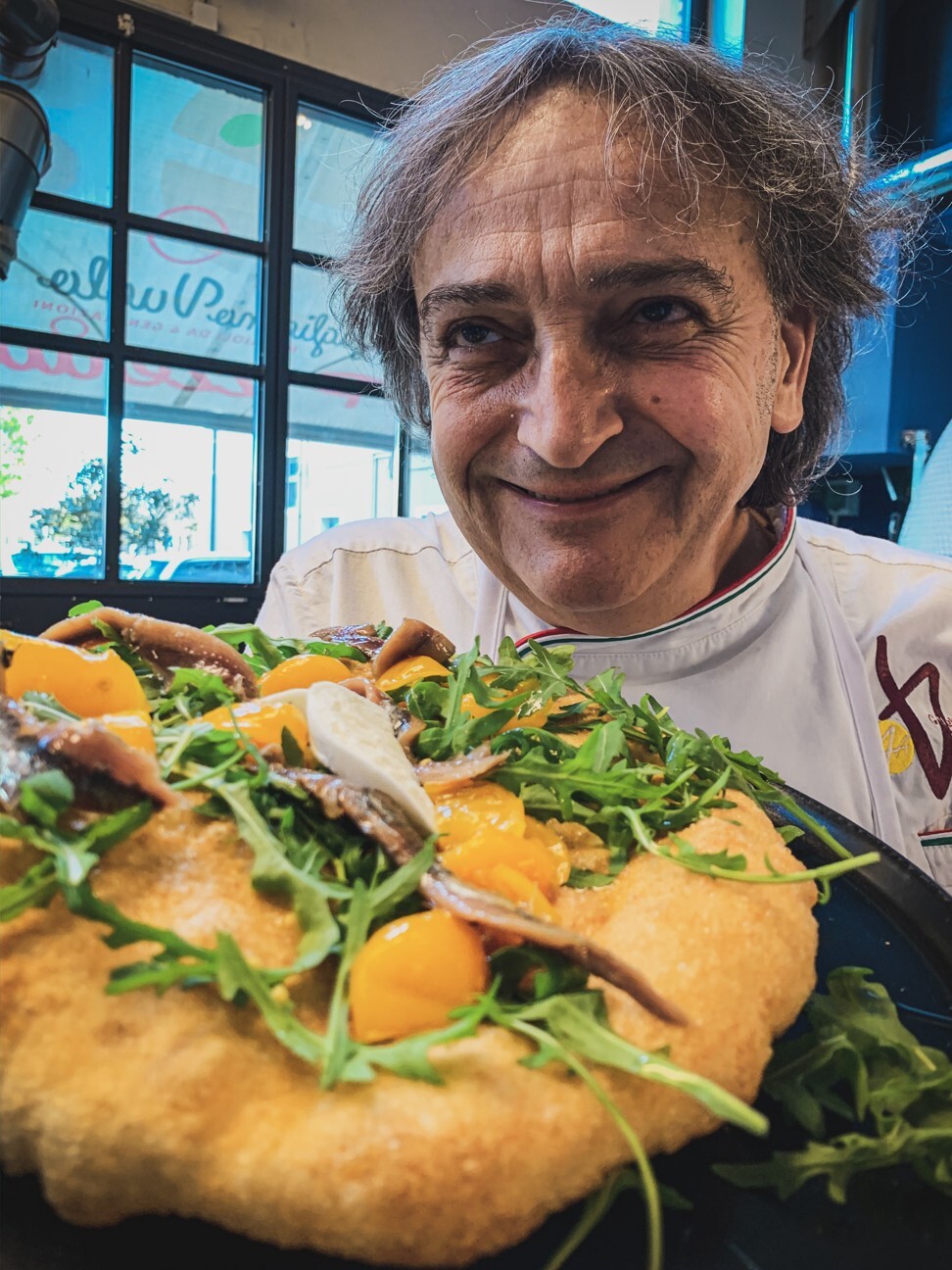
The classic dish is winning fans in Taiwan, too. Alex Chian An-lian heads La Pala pizzeria and Heaven Pizzeria in Taichung, two of six Neapolitan pizzerias on the island.
“I’ve always been a lover of pizza, but when I read about Japan attending the courses in Naples I decided to go there and learn how to make the real thing,” he says. “In Taiwan, people eat American pizzas, but that’s nothing close to what is made each day in Naples. I want them to know that pizza hails from there and what the original one really tastes like.”
Chian imports ingredients from Naples, including flour, fresh buffalo mozzarella and San Marzano tomatoes. He keeps American-sounding pizzas including the Hawaiian, with pineapple and sausage, on the menu alongside the Neapolitan classics. Palates must be slowly honed and educated, he says.
The Americans first brought pizza to Japan after the second world war, but it’s not the real thing. It’s always been a commercial food with pepperoni, ketchup, industrial cheese. It’s actually quite disgusting, but it was considered cool to eat
Naples’ pizza lobby has plans to spread the word to China and other Asian countries, too.
Even though pizza is very popular in China, commercial pizza chains still dominate the market, making it tougher for small, artisan pizzerias to enter, experts say. That may change soon.
“There is great ferment,” says consortium director Stefano Auricchio. “We are receiving positive feedback and expect there will be soon an evolution in the number of available courses and in the possibility of opening a new pizza school in China.”

